Anker 60W 6-port A2123

Official specifications:
- An industry-high 60 watts / 12 amps through six ports charges all your phones, tablets and other devices simultaneously.
- Guaranteed Safety
- Built with industry grade materials and premium circuitry, this product is CE, FCC and RoHS certified to ensure complete safety and reliability.
- Ultra Compact
- As small and light as your average pocket wallet, it's the most compact 60W charger on the market and smaller than some 50W options.
I got it from Amazon dealer king-power_accessories


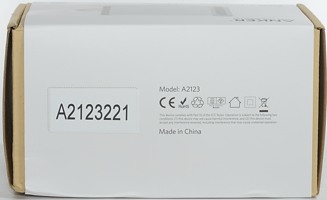

I got this charger in a cardboard box.


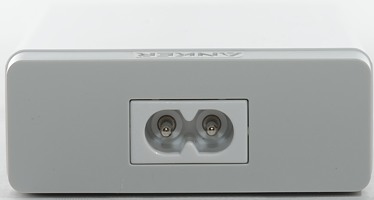
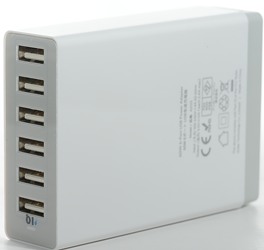


Measurements
- +5 volt is common, but ground is separate.
- Overloaded output does not automatic recover, power must be cycled.
- Unloaded power consumption is 0.1 watt
- Usb port coding is automatic selected (Up to Apple 2.5A).
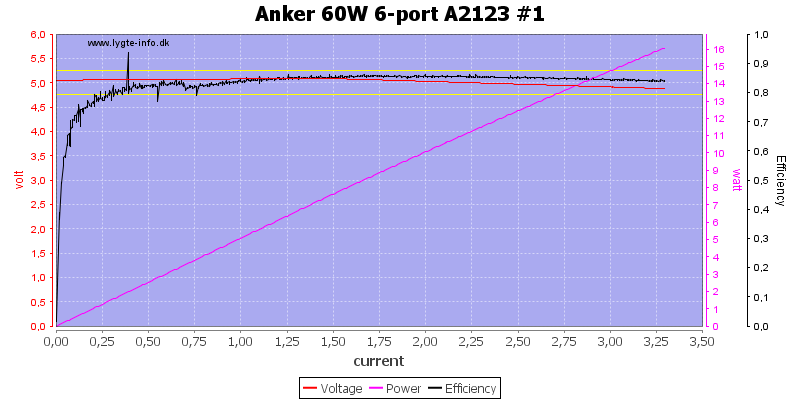
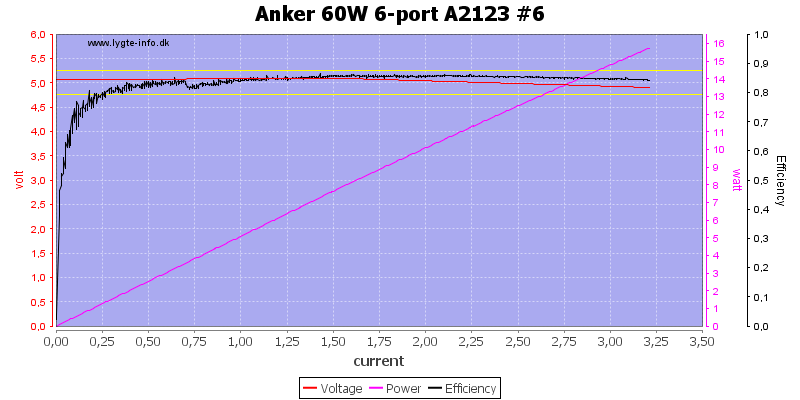
It looks like each port has individual overload protection (Very good), but it is a bit high at 3.2A.
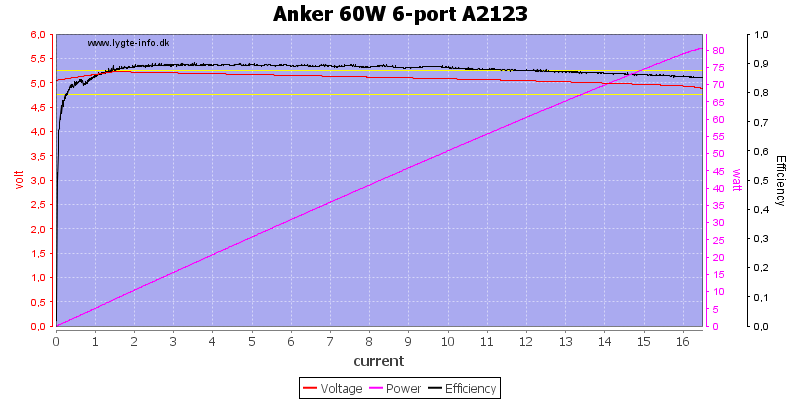
The charger has a impressive efficiency at about 90%.
Running all ports in parallel shows that the charger can deliver considerable more than it is rated for, but I did not see any overload protection. There is the individual overload protections, but that might mean 19A and is rather high for a 12A rated usb charger.
I di not see this as a big problem, most people will never get anywhere near full load.
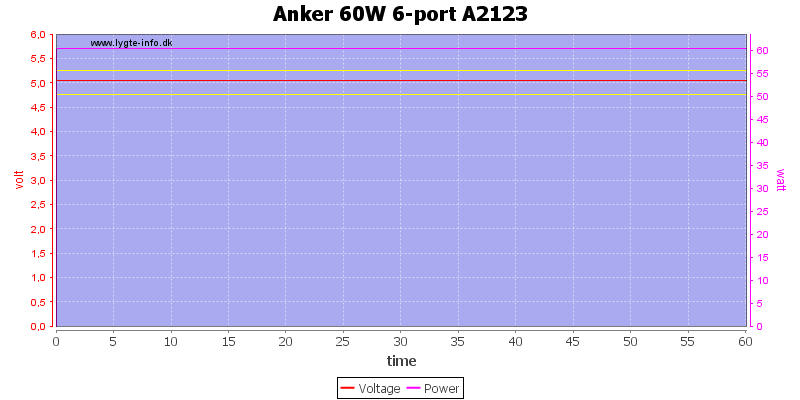
The charger has no problem with a total load of 12A for one hour.
The temperature photos below are taken between 30 minutes and 60 minutes into the one hour test.
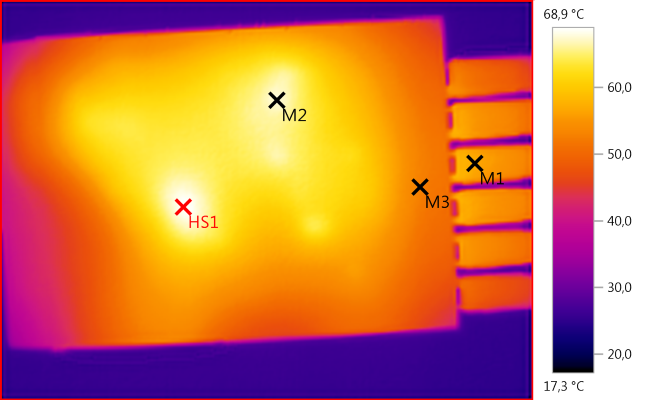
M1: 56,8°C, M2: 67,7°C, M3: 52,8°C, HS1: 68,9°C
M2 must be the rectifier transistor.
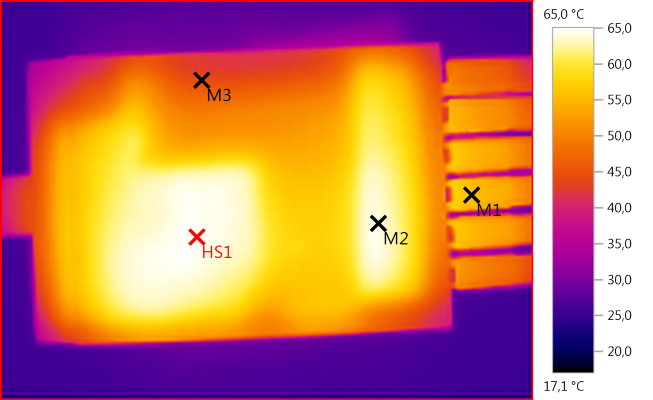
M1: 56,1°C, M2: 64,0°C, M3: 44,4°C, HS1: 65,0°C
HS1 is the heatsink above the transformer and M2 is the heatsink for the rectifier transistor.
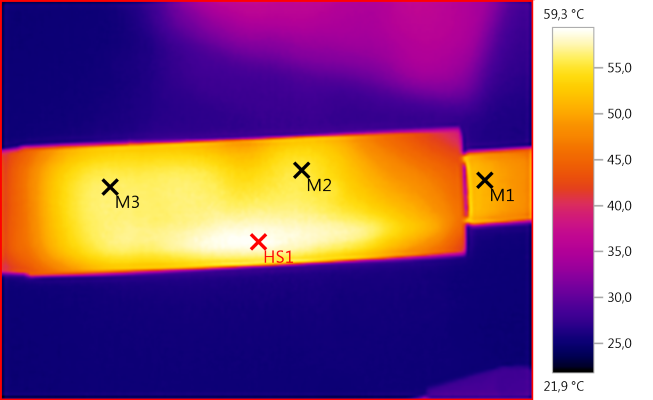
M1: 50,8°C, M2: 55,5°C, M3: 56,3°C, HS1: 59,3°C
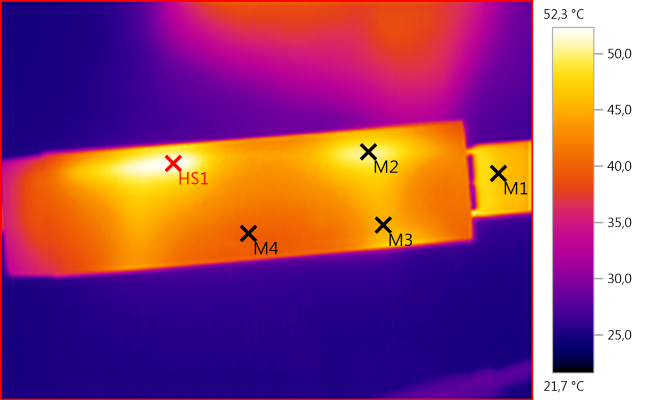
M1: 46,5°C, M2: 50,3°C, M3: 45,1°C, M4: 40,0°C, HS1: 52,3°C

There is not much noise at 0,5A with 16mV rms and 180mVpp.

The noise is about the same at 2.5A with 15mV rms and 190mVpp.
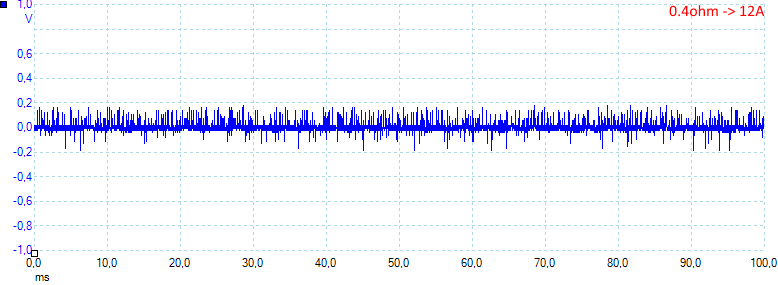
At full 12A load it increases: 34mV rms and 500mVpp.
Tear down
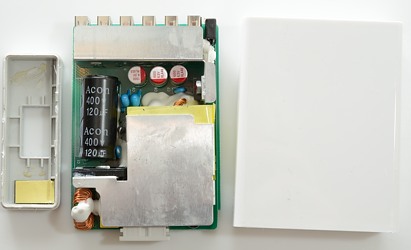
I could break it open when holding it in a vice and using a hammer.
It would have been possible to put it together again, but when I removed the small circuit board I damaged it too much.
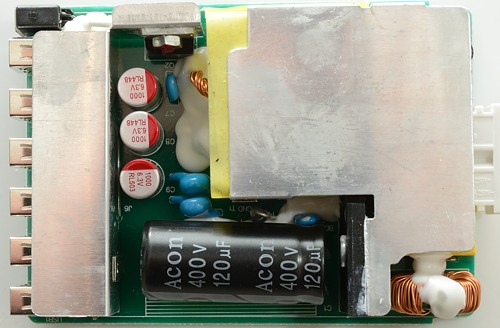
On the mains side one of the two common mode coils can be seen and the bridge rectifier that is mounted on the heatsink. There are two safety capacitors. Notice the twisted wires from the hidden transformer, they are probably individually isolated (litz wire).
But a strange detail, the 8A version has two rectifier diodes on the low volt side, but this has one for 12A?
There is a good explanation for this, it is not a diode, but a mosfet transistor doing synchronous rectifications. This is also some of the reason for the very good efficiency.
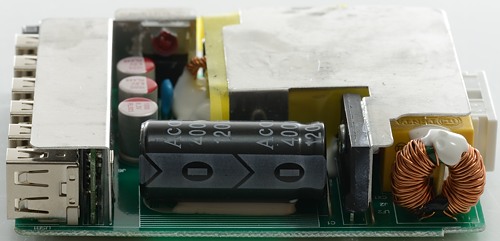
Here the common mode coil is more visible and behind the usb connectors another circuit board can be seen.
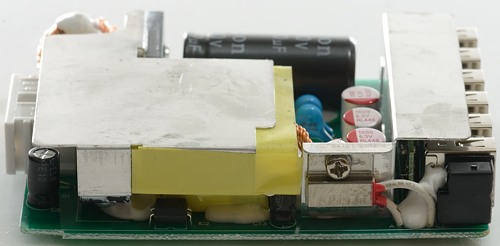
Hidden under the heatsink it is barely possible to see the mains switcher transistor, next to the opto coupler used for feedback.
The metal box mounted on the heatsink is a thermos sensor. The charger might not have a common overcurrent protection, but instead has an over temperature protection. This is a very good safety to have.


The block beside the usb connectors is a led or rather a stand for a led.

On the other side of the circuit board is the mains switcher controller (U1) it is a 7 pin IC. The synchronous rectification control IC (U2), the voltage feedback controller (IC3) and the auto usb coding (IC4..IC9)

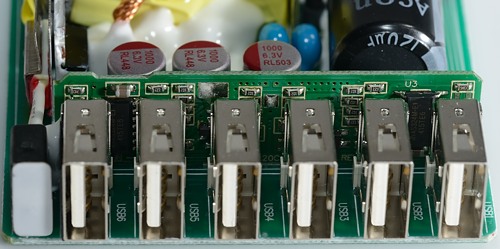
With the heatsink removed the circuit board behind the usb connectors is much easier to see.


Notice the R010 resistors, they are used to measure the current on each channel. This is feed into the AS324 IC's that are quad OpAmp, they control the small transistors to turn each output off if overloaded.
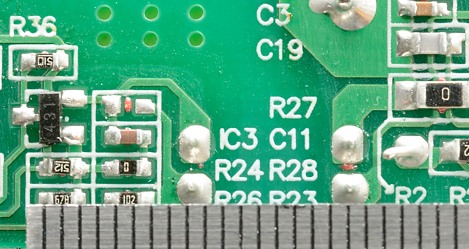
The distance between low volt side and mains is enough.
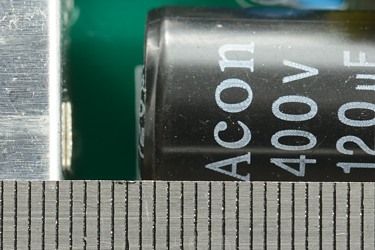
I am not completely happy about the capacitors and the low voltage heatsink, the distance is good enough (Has to be 4mm), but will it also be good enough after a drop on a hard floor? This depends on the glue that holds the capacitor and it do feel like it is very strong.
Testing with 2500 volt and 5000 volt between mains and low volt side, did not show any safety problems.
Conclusion
This charger looks very good with low noise, overload protection on each output and able to run at full current.
Anker has both a 5 port 40 watt charger and this, which one to get?
If you really need 6 port, this is obvious, but what about 50% more power with only 20% more connectors?
The answer must be charging pads, the 40W can handle 3 or 4 pads, this charger can handle 5 or 6 pads simultaneous.
Notes
Index of all tested usb chargers
Read more about how I test USB power supplies/charger


































